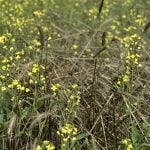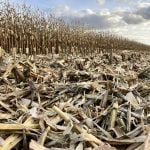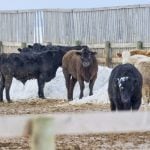Like most Prairie farmers, John Guelly didn’t give a lot of thought to his wheat after unloading it at the elevator.
But that changed after a trip to Winnipeg last February for Cigi’s Combine to Customer program.
The Westlock producer applied for the program because he was “curious to see what all goes on there” — there being Cigi’s office building near the famous corner of Portage and Main. He knew the building housed a flour mill and baking facilities, but the real eye-opener was getting to see wheat from the end-user’s point of view.
For example, staff baked some bread with CPS wheat that had low protein content — an undesirable trait for bakers because the dough isn’t as strong.
“But using their recipe and process for making the bread, which was slightly off the norm, they made a very good end product,” said Guelly.
“They were showing us what they would show to customers around the world — that they can take our wheat on not such a great year and still have a great end product just by tweaking what they do with it.”

Showing farmers what grain buyers want from Canada is the heart of the program, and considered important enough that Cigi pays the whole shot — flights, hotels and meals — to get growers to participate.
But spots in the 2-1/2-day sessions are limited, with just 10 places for Alberta producers in each of the three sessions this winter (one each in January, February, and March). And the deadline is coming up soon — applications must be received by the Alberta Wheat Commission by Dec. 5.
It’s well worth the trip, said Guelly.
“It was a great experience,” he said. “It’s nice to know what people on the other end are wanting, which makes sense of why we’re being asked to grow certain crops in certain ways.”
Read Also

The long march to autonomy
The big players in the machinery market keep adding pieces towards autonomous vehicles for farming, but how far away is a final product?
Different markets have different requirements, and the program helps producers understand what those markets are looking for, said Dean Dias, director of value chain relations for Cigi.
“It’s good for the producer to see which market the grain he or she is growing is going to, but also what the product looks like and what is required out of the different wheat we grow for quality standards,” said Dias.
“Every producer is going to grow what is suitable for them based on what grows best for their region. But at the same time, we want to talk about what classes are good and how those different varieties perform in different industries.
“They get to see what happens when the grain leaves the farm gate, and they become more informed about what they should grow and how they can market that after the program.”
The program was also “a great opportunity” to connect with other producers from across the Prairies, said Guelly.
“They strive to try and get an even amount of Alberta, Saskatchewan, and Manitoba producers there, and it’s really surprising to find out how vastly different we do things based on our areas and our crops,” he said.
“It was a very full 2-1/2 days, with speakers and tours, but there was still time available to sit down and talk with other producers.”
That’s the most important thing about the program, said Dias.
“When producers from three different provinces sit in the same room and talk about issues, they learn from each other,” he said. “In the end, it is not Alberta wheat or Saskatchewan wheat or Manitoba wheat. What goes out to customers is western Canadian wheat.
“And if it’s western Canadian wheat, they’re all part of the same team.”
For more information on the program, contact Brian Kennedy at [email protected].















